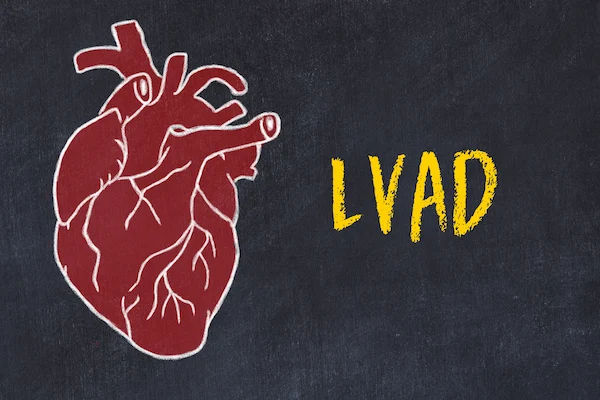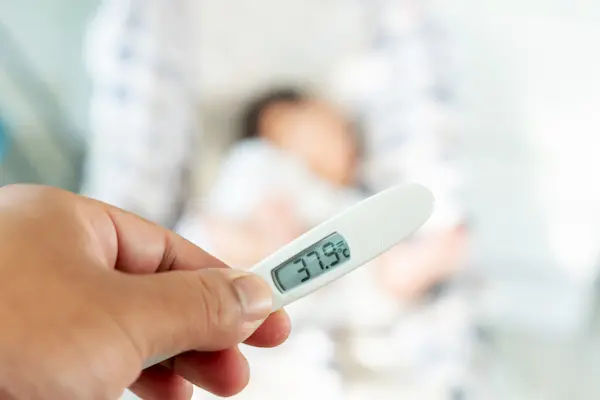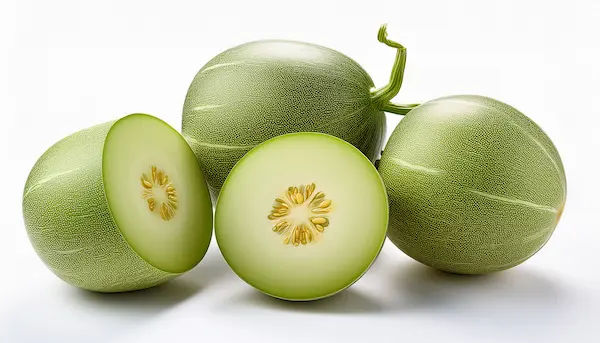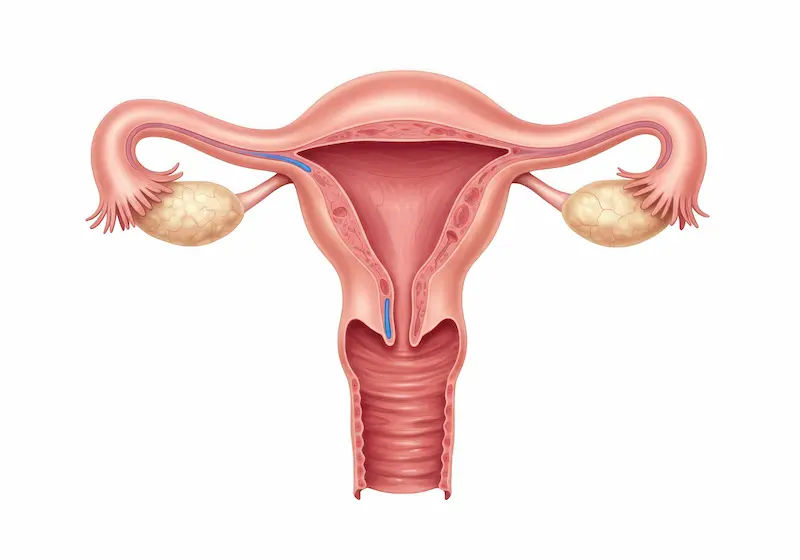Guide to First Aid For Burns Caution Actions Home Care
Get essential guidance on first aid for burns. Learn crucial caution actions, immediate steps, and safe home care techniques for minor burns to promote healing.

Written by Dr. Siri Nallapu
Reviewed by Dr. Dhankecha Mayank Dineshbhai MBBS
Last updated on 27th Oct, 2025

Introduction
A burn can happen in seconds—spilled tea, a hot pan, a sun-soaked afternoon, or a splash of cleaning chemicals. In those first moments, the right actions can limit damage, reduce pain, and speed recovery. This guide simplifies first aid for burns and shows you what to do (and what not to do), with clear steps you can follow at home. We’ll explain how to identify the type and severity of burns, the immediate first aid actions to take, when to seek medical help, and how to care for healing skin. Along the way, you’ll see evidence-based advice drawn from top medical sources, plus practical tips that make a real difference.
Whether you’re caring for a child with a scald, an adult with a kitchen accident, or a mild sunburn, this article will help you act with confidence. If symptoms persist beyond two weeks or you’re unsure about the severity of the injury, consult a doctor online with Apollo 24|7 for further evaluation. Ready? Let’s dive into first aid for burns so you can be prepared with smart, safe actions at home.
What Our Web Search Shows?: How Top Guides Cover Burn First Aid
To align this guide with best practices, we reviewed top-ranking pages on first aid for burns from trusted organizations (e.g., NHS, Red Cross, Mayo Clinic, Cleveland Clinic, St John Ambulance, American Burn Association, MedlinePlus, WHO, AAFP, Cochrane). Across these pages, we observed consistent structure and themes:
Common headings:
• What to do immediately (cooling with cool running water, removing jewelry/clothing)
• What not to do (no ice, no butter or toothpaste)
• When to seek medical help (location, size, depth, chemical/electrical burns)
• Types and severity of burns (superficial/partial/full thickness)
• Covering and dressing recommendations (non-stick, cling film)
• Special cases: chemical and electrical burns
• Pain management and tetanus advice
• Prevention tips at home
Key points covered:
• Cool the burn quickly under cool running water for up to 20 minutes, ideally within 3 hours.
• Avoid ice and home remedies that can worsen tissue damage.
• Cover with a sterile, non-adhesive dressing or loosely with plastic wrap.
• Flush chemical burns copiously; turn off power before touching someone with an electrical burn.
• Watch for infection signs and seek urgent help for severe or high-risk burns.
• Children and older adults are at higher risk and often need earlier medical evaluation.
Gaps/opportunities:
• Few guides quantify why “20 minutes of cooling” matters—this guide references the evidence and explains the “why.”
• Scar prevention, itch control, and rehab tips are often brief—we expand them.
• Checklists and home kit prep are underused—we provide a simple, practical checklist.
This article integrates these best practices and fills gaps with clear, step-by-step actions and nuanced home care guidance, aligned with authoritative sources.Consult a Top General Physician
Know the Burn: Types, Depth, and Why It Matters?
Correct first aid depends on burn depth and size. Understanding the basics helps you choose the right actions.
Burn depth (modern terms)
• Superficial (first-degree): Affects only the top layer (epidermis). Red, painful, dry (no blisters). Example: mild sunburn. Usually heals within 3–6 days.
• Partial-thickness (second-degree): Extends into the dermis. Red to pink, wet or weeping, blisters present, very painful. Heals in 2–3 weeks for superficial partial-thickness; deeper partial-thickness may need medical care.
• Full-thickness (third-degree and beyond): All skin layers damaged; may look white, brown, black, waxy, or leathery; can be numb due to nerve damage. Always medical emergencies.
Size matters: quick estimation
• The “palm method”: The patient’s palm (including fingers) ≈ 1% of total body surface area (TBSA) [2].
• Larger than 3 inches (~8 cm) in diameter or more than the size of your palm? Get medical help—especially if on face, hands, feet, genitals, buttocks, or over major joints .
Location and cause matter
• Hands/face/genitals/feet/major joints: higher complication risk.
• Electrical and chemical burns require specific actions and medical evaluation.
• Inhalation injury suspicion (smoke exposure, hoarseness, soot in mouth): urgent care .
Why it matters:
Depth and size guide whether you can treat at home or need urgent care, how you dress the burn, and how long healing will take. When unsure, err on the side of caution—seek professional advice. If your condition does not improve after trying these methods, book a physical visit to a doctor with Apollo 24|7.
First Actions in the First Minute: Do This, Not That
Your first actions can reduce tissue damage by limiting heat spread and swelling.
Do this immediately
• Stop the burning process: Remove the person from the heat source; for flames, “Stop, Drop, and Roll” to smother fire.
• Cool the burn under cool, running tap water as soon as possible. Ideal duration: up to 20 minutes (details next section).
• Remove rings, watches, bracelets, and tight clothing near the burned area before swelling starts.
• If clothing is stuck to the skin, do not pull it off; cut around it.
• Keep the person warm: Prevent hypothermia by warming the rest of the body with a blanket while cooling only the burn.
Do not do this
• Don’t use ice or ice water (can worsen injury and cause vasoconstriction/hypothermia) .
• Don’t apply butter, oil, egg whites, toothpaste, or household creams (traps heat and increases infection risk).
• Don’t break intact blisters (increases infection risk).
• Don’t apply adhesive dressings directly onto the burn.
• Don’t delay flushing a chemical burn while looking for a neutralizing agent.
Quick example
• A kitchen splash from boiling water burns the back of your hand. Best actions: Move to the sink immediately; run cool tap water over the burn for 20 minutes; remove your ring; after cooling, cover with a sterile, non-adhesive dressing. Avoid ice and ointments initially. This simple sequence reduces pain and may limit burn depth.
Optimal Cooling and Covering: The First 20–30 Minutes
Cooling: the cornerstone of first aid
• Duration: Cool the burn under cool running water for up to 20 minutes, ideally within 3 hours of injury; earlier is better. Several emergency care organizations endorse this timing because prolonged cooling helps dissipate residual heat and may reduce tissue damage.
• Temperature: Use cool or room-temperature tap water (15–25°C). Avoid ice or very cold water to prevent additional tissue injury.
• Special note for children/elderly: Cool only the burn area; keep the rest of the body warm to reduce hypothermia risk.
Evidence snapshot: Health systems like the NHS and St John Ambulance recommend 20 minutes of cool running water based on clinical experience and research indicating improved outcomes when cooling is prompt and sustained
After cooling: clean and cover
• Gentle cleansing: If the burn is minor, you may gently cleanse surrounding skin with mild soap and water after cooling. Do not scrub the burn itself.
• Covering: Loosely cover with sterile, non-adhesive dressing (e.g., non-stick gauze) or apply a layer of clean plastic wrap/cling film over the burn, not tightly around a limb. This reduces contamination and pain (air exposure can worsen pain).
• Elevation: Elevate the burned limb to reduce swelling.
• Pain relief: Consider over-the-counter pain relievers such as ibuprofen or acetaminophen, following label directions and contraindications.
Caution with topical products
• For minor superficial burns after cooling, a thin layer of plain petroleum jelly may keep the wound moist and comfortable. Avoid fragranced lotions and alcohol-based gels on open skin.
• Medical-grade honey may aid partial-thickness burn healing in some cases, but household honey is not sterile and should not be used; consult a clinician before using specialized products.
• Silver sulfadiazine (SSD) is no longer preferred for minor outpatient burns because it can delay healing.
Home Care After First Aid?: Cleaning, Blisters, Dressings, Pain
Blister basics
• Do not intentionally pop small, intact blisters; they serve as a natural barrier against infection.
• If a blister bursts, gently clean with mild soap and water, pat dry, and cover with a sterile, non-stick dressing. Change daily or if wet/dirty. Watch for signs of infection (see next section).
Dressing routine at home
• Use non-adhesive dressings; secure with gauze roll or paper tape.
• Change dressings daily or as directed by a clinician. Keep the area clean and dry; avoid soaking until healed.
• Moist wound healing helps—apply a thin layer of petroleum jelly before dressing, unless your clinician recommends a different dressing.
Pain and itch management
• Pain: NSAIDs (ibuprofen) or acetaminophen can help, taken as directed. Cooling and covering also reduce pain.
• Itch: As the burn heals, itching is common. Use fragrance-free moisturizers on healed skin; consider oral antihistamines at night if bothersome (check with a clinician).
• Sleep and swelling: Elevate the burned area, especially at night, to decrease throbbing.
Tetanus and healing conditions
• Burns are wounds; check tetanus vaccination status. You may need a booster if not up to date (usually every 10 years; sooner for certain wounds).
• Slow healing? Conditions like diabetes can delay recovery. If the burn is not improving after a few days, or if you have diabetes, seek medical advice. Apollo 24|7 offers a convenient home collection for tests like HbA1c if your clinician recommends screening.
Practical tip: “Set-and-check” routine
• Set a reminder to change dressings and inspect the wound at the same time daily.
• Take a quick photo each day under similar light to track improvement and catch early signs of infection.
Special Cases: Chemical, Electrical, Sunburn, and Inhalation
Chemical burns: flush first, ask questions later
• Immediate action: Brush off dry powders with a gloved hand/towel; then flush the area with copious running water for at least 20 minutes. Remove contaminated clothing and jewelry while flushing.
• Do not attempt to neutralize acids/alkalis (exothermic reactions can worsen burns).
• Check product label/MSDS if available. Seek medical care, especially for eye exposure, large areas, or strong chemicals.
Electrical burns: hidden damage risk
• Safety first: Turn off the power source or ensure disconnection before touching the person. If you cannot switch off power, use a non-conductive object (wood/plastic) to separate them from the source.
• Call emergency services. Electrical burns can cause internal injuries and heart rhythm problems even with minimal skin signs.
• After removal from source: Check breathing and pulse; start CPR if needed and trained.
Sunburn: a common superficial burn
• First aid: Move out of the sun; cool compresses or cool showers, oral hydration, and NSAIDs for pain. Apply fragrance-free moisturizer or aloe vera gel to intact skin; avoid petrolatum if heat is still trapped. Do not pop sunburn blisters.
• Seek care for extensive blistering, fever, confusion, or dehydration (especially in children and older adults) [2][6].
Smoke inhalation and airway burns
• Red flags: Hoarseness, coughing, wheezing, singed nasal hairs, soot in mouth/nose, facial burns, difficulty breathing—call emergency services immediately [2][6].
Red Flags, Infection Signs, and When to Seek Care?
Call emergency services now if
• The burn is deep/full-thickness, charred, white/brown/black, or numb.
• It involves the face, hands, feet, genitals, buttocks, or a major joint.
• It covers more than the size of the victim’s palm (≈1% TBSA) or is larger than 3 inches in diameter.
• It’s an electrical or chemical burn, or there’s suspected smoke inhalation.
See a clinician within 24 hours if
• The pain is severe despite first aid.
• There are large blisters or blisters on high-risk areas (hands/face).
• You are very young, older, pregnant, or have chronic conditions (e.g., diabetes, vascular disease).
• The burn isn’t improving within 48–72 hours.
Infection watch
• Warning signs: Increasing redness/pain/swelling warmth around the wound; pus or bad odor; red streaks; fever/chills; wound not healing as expected.
• Action: Seek medical review promptly. If symptoms persist beyond two weeks, consult a doctor online with Apollo 24|7 for further evaluation.
Unique insight: “Day 3 check”
• Day 1–2: Expect pain and swelling; pain should progressively ease.
• Day 3: You should see early signs of improvement (less pain, healthier wound surface). If worse on Day 3, escalate care—earlier intervention can prevent complications.
Prevention and Preparedness: Make Your Home Burn-Safe
Home prevention actions
• Kitchen: Turn pot handles inward; use back burners; keep a dry oven mitt handy; never carry hot liquids while holding a child.
• Water temperature: Set your water heater to 49°C (120°F) or lower to prevent scalds, especially in homes with children/older adults.
• Electrical: Use outlet covers, replace frayed cords, avoid overloading sockets.
• Chemicals: Store acids/alkalis (e.g., drain cleaners) locked away; use gloves/eye protection; know emergency flushing protocols.
Child and older-adult safety
• Children: Scalds from hot liquids are the most common pediatric burns. Test bath water; keep hot drinks out of reach; never leave a child unattended in the kitchen.
• Older adults: Reduced mobility and thinner skin increase risk; install grab bars and use electric kettles with auto shutoff.
Your burn first-aid kit (at home and travel)
• Non-adhesive sterile dressings (various sizes)
• Clean plastic wrap/cling film
• Saline or access to running water
• Gauze rolls, paper tape
• Ibuprofen/acetaminophen (check for contraindications)
• Aloe gel (for sunburn), fragrance-free moisturizer
• Clean scissors, nitrile gloves
• A small flashlight (for inspection)
Keep the kit labeled and accessible—ideally in the kitchen.
Recovery and scar prevention
• Once healed (no open areas): Moisturize 2–3 times daily; protect from sun with SPF 30+ for at least a year to prevent hyperpigmentation and scarring.
• Silicone gel/sheets may reduce scar thickness over time; consider after clinician advice.
• Gentle range-of-motion exercises help prevent stiffness when burns are near joints.
Conclusion
Burns are common—but preventable and manageable with the right first aid. The most effective action is also the simplest: cool the burn under running water for up to 20 minutes. Then protect the area by covering it and managing pain while you monitor for signs of infection. Avoid old myths like ice, butter, or popping blisters—these can make injuries worse. For chemical and electrical burns, follow the special safety steps and seek urgent medical help.
Focus on prevention at home: set safe water temperatures, secure pot handles, store chemicals safely, and child-proof high-risk areas. Build a small burn first-aid kit and keep it where you need it most—the kitchen. As healing progresses, moisturize healed skin, protect it from sun, and consider silicone products to reduce scarring. If your burn is large, deep, in a sensitive area, or not improving after 48–72 hours, get professional advice. If symptoms persist beyond two weeks, consult a doctor online with Apollo 24|7 for further evaluation. If you have diabetes or other conditions that slow healing, book a physical visit to a doctor with Apollo 24|7.
With clear knowledge and a few prepared steps, you can act fast, avoid common pitfalls, and support safe healing at home.Consult a Top General Physician
Consult a Top General Physician

Dr Syed Mateen Pasha
General Physician
2 Years • MBBS
Bengaluru
PRESTIGE SHANTHINIKETAN - SOCIETY CLINIC, Bengaluru

Dr. Vivek D
General Physician
4 Years • MBBS
Bengaluru
PRESTIGE SHANTHINIKETAN - SOCIETY CLINIC, Bengaluru

Dr. Anand Ravi
General Physician
2 Years • MBBS
Bengaluru
PRESTIGE SHANTHINIKETAN - SOCIETY CLINIC, Bengaluru

Dr. Harshendra Jaiswal
General Physician/ Internal Medicine Specialist
12 Years • MBBS , MD (General medicine)
Kolkata
108 DHANA DHANVANTARI Clinic, Kolkata
(25+ Patients)
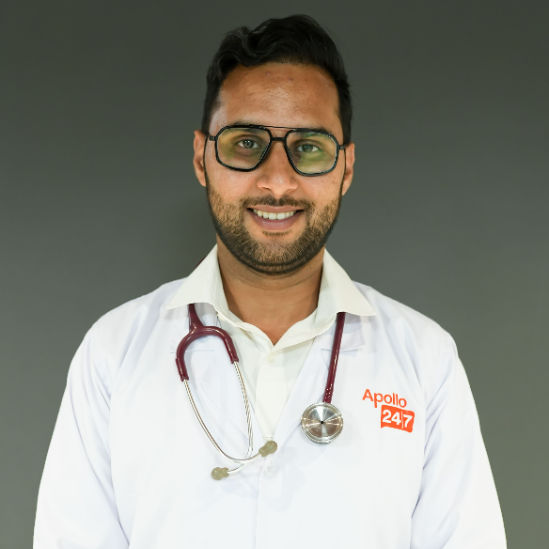
Dr. Syed Ismail Ali
General Practitioner
7 Years • MBBS
Hyderabad
Apollo 24|7 Clinic, Hyderabad
Consult a Top General Physician

Dr Syed Mateen Pasha
General Physician
2 Years • MBBS
Bengaluru
PRESTIGE SHANTHINIKETAN - SOCIETY CLINIC, Bengaluru

Dr. Vivek D
General Physician
4 Years • MBBS
Bengaluru
PRESTIGE SHANTHINIKETAN - SOCIETY CLINIC, Bengaluru

Dr. Anand Ravi
General Physician
2 Years • MBBS
Bengaluru
PRESTIGE SHANTHINIKETAN - SOCIETY CLINIC, Bengaluru

Dr. Harshendra Jaiswal
General Physician/ Internal Medicine Specialist
12 Years • MBBS , MD (General medicine)
Kolkata
108 DHANA DHANVANTARI Clinic, Kolkata
(25+ Patients)

Dr. Syed Ismail Ali
General Practitioner
7 Years • MBBS
Hyderabad
Apollo 24|7 Clinic, Hyderabad
More articles from General Medical Consultation
Frequently Asked Questions
1) How long should I cool a burn under water?
Cool under cool running water for up to 20 minutes, as soon as possible after the injury. This first aid action helps limit tissue damage and pain.
2) Should I pop and burn blisters?
non-adhesive dressing. This is safer for minor burn care at home and reduces infection risk.
3) What should I put on a minor burn after cooling?
For small superficial burns, a thin layer of plain petroleum jelly and a non-stick dressing works well. Avoid butter, toothpaste, or silver sulfadiazine cream for minor outpatient burns.
4) When is a burn an emergency?
If it’s deep/full-thickness, larger than your palm, involves the face/hands/feet/genitals/major joints, or is chemical/electrical, seek emergency care immediately.
5) How do I tell if a burn is infected?
Watch for increasing redness, swelling, pain, pus, bad odor, red streaks, or fever. If you see these signs, seek medical help. If symptoms persist beyond two weeks, consult a doctor online with Apollo 24|7.
